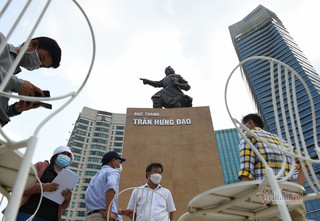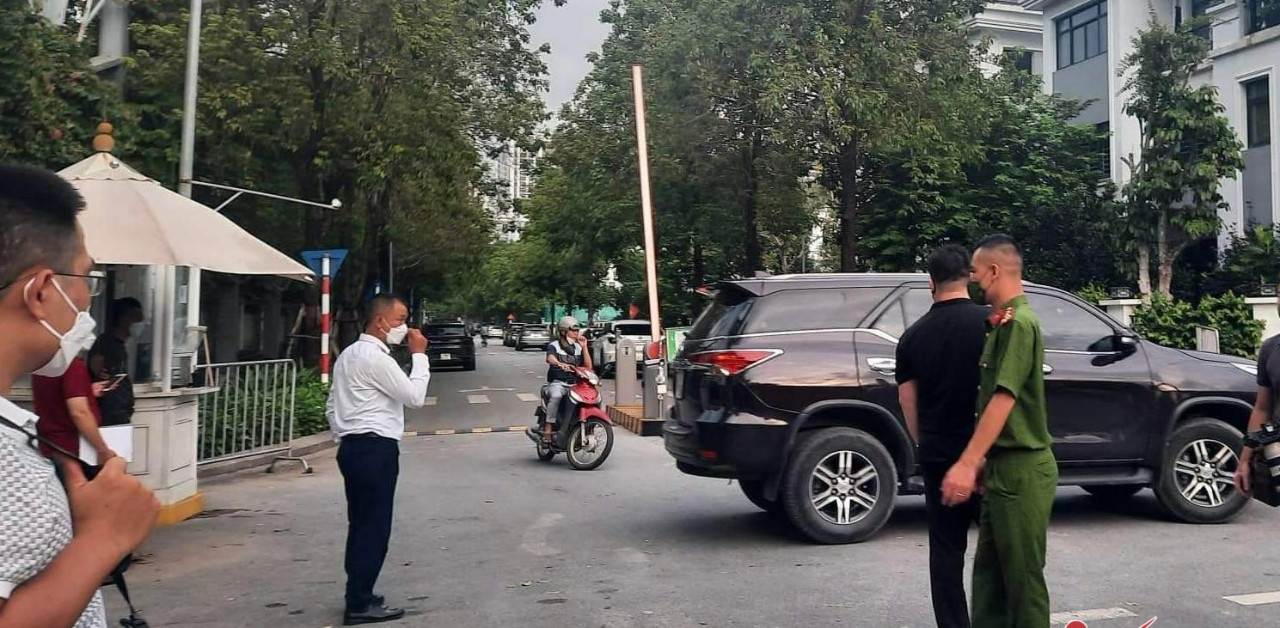Where rice grains are kept at minus 5 degrees Celsius
More than 3,000 rice varieties are kept with many strict stages at Can Tho University, serving as a resource for research, teaching, and breeding new varieties.
The rice seed bank is located in the block of the Department of Genetics and Plant Breeding, of the Faculty of Agriculture, Can Tho University. There are two rooms of nearly 150 square meters in size, minimizing people in and out, and the temperature is always set to the lowest level. In the room, there are usually 3-5 officers and nearly 20 students working, security guards are on duty at night.

Lecturer of the Faculty of Agriculture, Can Tho University working at a rice seed bank. Image: Nguyen Anh
Dr. Huynh Ky, Deputy Head of Genetics and Plant Breeding Department (Faculty of Agriculture), said that thousands of these rice varieties are nearly 50 years of effort that teachers and staff of the Delta Research and Development Institute have worked on. Cuu Long River (under Can Tho University) collected and preserved. In 2019, the department received the transfer and continued that task until now.
Of these, the most common is the western crop variety (1988 varieties), some of which were collected from the 70s of the last century. As for the “special” varieties such as her fragrant peach market, charcoal sticky rice, coconut cotton, resources … were collected in 1994 -1997. The sets of upland rice varieties from the Central Highlands, Northwest, Central Coast… In addition, high-yielding rice varieties and other lines were bred by Can Tho University.
“This is considered the largest rice seed conservation bank in the West. To prolong the shelf life and quality, the rice seeds are frozen at minus 5 degrees Celsius,” said Dr. Ky, and said the collection and storage thousands of rice varieties are significant in preserving precious varieties, breeding new varieties, meeting market demand; especially for research, teaching…

The temperature in medium-term storage is always kept at minus 5 degrees Celsius. Photo: Nguyen Anh
According to Dr. Ky, in order to have a sample of rice, students and teachers of the school have started from going to remote areas everywhere to collect. Samples are recorded origin, time, origin. These rice seeds are then selected very carefully, removing the poor quality and diseased seeds.
The most beautiful and strongest rice seeds are then dried, dried and packed anaerobically with a weight of 50g, the moisture content must be below 10% and depending on the needs of each rice variety, they are stored in the warehouse. short or medium term.
Short-term storage is cold at 20 degrees Celsius, storage time is 6-12 months. Medium-term storage temperature is maintained at minus 5 degrees Celsius, storage time is over 10 years. These two warehouses are made from containers placed side by side in a room of about 50 square meters. Because the temperature must be maintained, in addition to the main power source, the school also equips a generator to provide electricity in the event of a fault.

Rice varieties were bred in a greenhouse at Can Tho University. Image: Nguyen Anh
Freezing plays an important role in prolonging the life of rice varieties. Rice seeds at minus 5 degrees Celsius will fall into a state of “hibernation”. When needed, the scientists transferred the seeds to a cold room of 20 degrees Celsius for a day. After that, the seeds were left at room temperature for a few hours before being studied.
Although the storage time in medium-term warehouses can be more than 10 years, it is difficult for rice varieties to survive to that point. Therefore, in order to preserve these seeds, the teachers in the department will periodically check the vigor of the rice variety every 3-5 years.
“If the vitality rate reaches over 80%, the rice will continue to freeze, if it is lower, the seeds are rejuvenated by replanting, then harvesting and continuing to store,” said Dr. Ky. said that this rejuvenation is sometimes very difficult and expensive. Because there are rice varieties grown in remote areas such as the Central Highlands and the Northwest, they should be brought there to be planted to suit the climate and soil for good varieties.
Seed storage warehouse. Video: Nguyen Anh
Nguyen Anh
at Blogtuan.info – Source: vnexpress.net – Read the original article here




